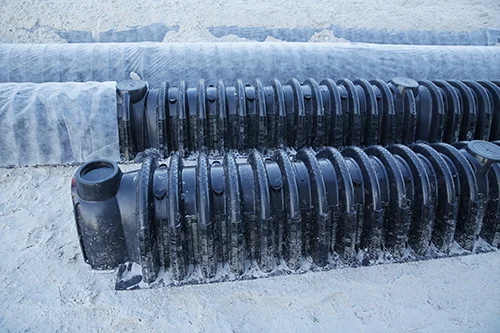
Design and Components
Chamber systems are an alternative to traditional gravel or stone drain fields. Instead of using traditional gravel, chamber systems utilize interconnected chambers that are filled with soil. These chambers provide a larger surface area for wastewater to infiltrate the soil and promote better treatment.
How they work
Chamber systems work similarly to conventional septic systems, with wastewater flowing from the home into a septic tank. From the tank, the wastewater is then distributed to the chamber system. The chambers provide additional contact between the effluent and the soil, allowing for better treatment and absorption.
Pros and cons
One of the major advantages of chamber systems is their ease of installation. They require fewer materials and less excavation compared to traditional drainfields. They are also more resistant to clogging, as the chambers have self-cleaning features. However, chamber systems may be more expensive to purchase and maintain than conventional systems. Cost to purchase and maintain h3
The cost of purchasing and installing a chamber system will vary depending on factors such as chamber size, soil conditions, and labor costs. On average, homeowners can expect to spend between $5,000 and $15,000 for a chamber system, including installation. Maintenance costs are similar to conventional systems, with regular septic tank pumping recommended every 3-5 years.
For more information, contact Morse Engineering and Construction for more information.
Source: aboutseptictanks.com
